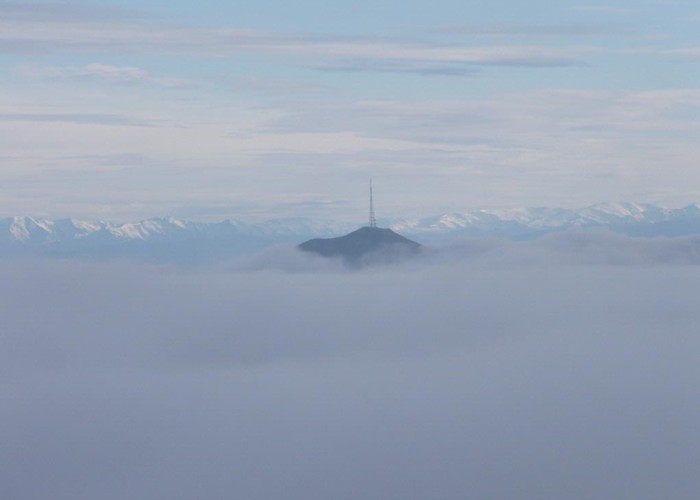As you drive into Christchurch, the Port Hills at the edge of the city are dwarfed by the more distant, but much taller hills across Lyttelton Harbour. The rounded profile of Mount Herbert stands above all else. At 920m, Mount Herbert is the highest point on the peninsula. It affords 360 degrees of views of hillsides and secluded bays to the east, and the broad Canterbury Plains and more distant Southern Alps to the west.
There are several routes onto Mount Herbert. You can follow the eastward ridge from the Sign of the Packhorse Hut at the head of the Kaituna Valley; you can take the Monument Track from the Purau-Port Levy Road (this is the quickest option); or you can take one of the tracks from Orton Bradley Park or Diamond Harbour. Combined, the Orton Bradley and Diamond Harbour tracks comprise the Mount Herbert Walkway. There's about a 4km walk back along the road to close this loop.
The description here is for the Diamond Harbour route only. This route provides a very even grade, but it is fully exposed to the sun and weather, and is rather dull. This route takes about 2.5 hours to ascend, and about 2 hours to descend.
Access
Note that the walkway crosses private farmland. It may be closed from August to Labour Weekend or during times of fire risk. From Lyttelton, drive around the bays to Diamond Harbour or take the ferry.
The route
From the small Diamond Harbour village centre, follow the road down to the wharf. There is limited parking here. Walking back the road, a track leads off to the right, dropping to the beach in a few minutes. When Mark Stoddart arrived at this beach in 1851, he was captivated by the sun glinting on the water and so named Diamond Harbour.
From this beach, a rough track heads directly uphill, following a rather dry creek through scruffy pine forest and straggly bush. Ignore any side trails and keep to the creek. The track soon crosses the main road at a bend (you could also park here) onto scrubby farmland. You soon pass a large eucalypt. This is a karri tree (Eucalyptus diversicolor), one of the world's tallest species, believed to have been planted here by Stoddard in the 1860s.
The track soon crosses a dirt road. This is the final point within Diamond Harbour you could start the track, cutting about 30 minutes off your walking time. The track climbs into farmland and passes the remains of Gideon Henderson's cob cottage. The gum trees he planted have matured to form a large square, outlining a garden that no longer exists.
The Diamond Harbour volcanic eruptions six million years ago were the last to occur on the peninsula. A series of thin lava flows (called the Stoddart Formation) formed the gentle slope you are climbing. Platy slabs of bluish rock littering the track are pieces of these lava flows.
After 1hr 30min, the track levels off briefly and soon meets a 4WD track. Very near the summit, a junction indicates 10 minutes left to the summit, or 15 minutes right to the shelter. There is surprisingly little obvious change in the vegetation as you climb. The summit is dominated by tussocks, and a few speargrasses are scattered around. When I climbed, the summit was completely enshrouded in cloud so there was no view at all. A few cows were standing around the trig or sheltering by a small antenna building. From here the nearest higher points are the equidistant Mounts Thomas (1023m) and Grey (933m) 66km to the north. To the east is clear ocean all the way to Chile and Patagonia.

